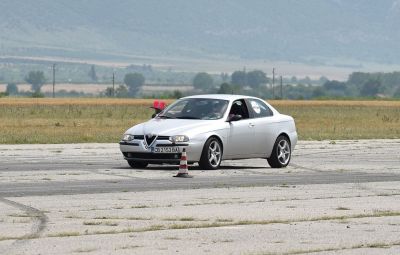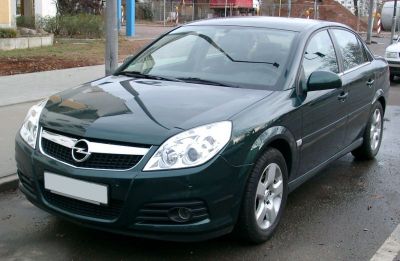 1998 BMW 3 Series Sedan (E46) Dimensions, Size & Specs
1998 BMW 3 Series Sedan (E46) Dimensions, Size & SpecsMeasurements of the 1998 BMW 3 Series Sedan, engineered for optimal performance and comfort
| Dimensions | |
|---|---|
| Length: | 4471 mm176.0 in14.7 ft |
| Width: | 1739 mm68.5 in5.7 ft |
| Height: | 1415-1434 mm55.7-56.5 in4.6-4.7 ft |
| Trunk Capacity: | 400-440 liter14.1-15.5 cu ft |
| Weight Specifications | |
| Curb Weight: | 1285-1620 kg2833-3571 lbs |
| Maximal permitted Weight: | 1782-2120 kg3929-4674 lbs |
| Tire Specifications | |
| Rims Sizes: | 15-inch rims:
|
| Tire Sizes: |
|
The BMW 3 Series Sedan (E46), produced from 1998 to 2001, represents a significant generation within BMW's famed compact executive car lineup. Measuring a length of 4471 mm (176.1 inches), a width of 1739 mm (68.5 inches), and a varying height between 1415 mm and 1434 mm (55.7 to 56.4 inches), the E46 balances sporty proportions with everyday usability. Its curb weight ranges from 1285 kg to 1620 kg (2833 to 3571 lbs), depending on the specific model and equipment, offering a solid yet agile driving experience. The maximum permissible weight spans from 1782 kg to 2120 kg (3929 to 4674 lbs), which accommodates passengers and cargo while maintaining dynamic handling capabilities. Luggage capacity varies between 400 and 440 liters (14.1 to 15.5 cubic feet), providing ample space for daily needs or weekend getaways. The E46's wheel and tire options are versatile, with rims sized at 15 inches (6.5J x 15), 16 inches, and 17 inches (8J x 17), and tire choices including 195/65 R15, 205/55 R16, 205/50 R17, 225/45 R17, and 205/55 R16, ensuring good grip and comfort. This generation of the 3 Series remains popular for its balanced size, classic BMW styling, and versatility, making it an appealing choice for enthusiasts and everyday drivers alike. Whether for comparison against contemporary sedans or for understanding the evolution of BMW’s design, the E46 3 Series Sedan stands out as a well-sized, finely tuned sport sedan from the turn of the millennium.
Discover the standout features that make the 1998 BMW 3 Series Sedan a leader in its class
Have a question? Please check our knowledgebase first.
The BMW 3 Series Sedan (E46), produced between 1998 and 2001, has an overall length of 4471 mm (approximately 176 inches) and a width of 1739 mm (about 68.4 inches). These dimensions place it comfortably in the compact executive car category, offering a balanced profile suitable for urban and highway driving. The length allows for a spacious cabin while maintaining nimble handling, and the width provides sufficient room for passengers without making the car cumbersome in traffic or parking situations.
The height of the BMW 3 Series Sedan (E46) varies slightly depending on the model and specific configurations, ranging from 1415 mm to 1434 mm (approximately 55.7 inches to 56.5 inches). This variation can be attributed to differences in suspension setups or optional equipment such as sport packages that might slightly lower the ride height. This height range contributes to the car's aerodynamic profile and sporty stance, enhancing both performance and aesthetic appeal.
The curb weight of the BMW 3 Series Sedan (E46) varies between 1285 kg and 1620 kg (about 2834 to 3571 lbs), depending on the specific model variant and optional equipment. A lighter curb weight, closer to 1285 kg, generally corresponds to the base or less-equipped models, enhancing agility and fuel efficiency. Heavier versions, up to 1620 kg, typically come with more luxurious or performance features, potentially influencing handling and acceleration but improving comfort and safety. Overall, the weight range is well-optimized for a balance between sporty driving dynamics and everyday usability.
Yes, the BMW 3 Series Sedan (E46) fits comfortably in a standard residential garage. With a length of 4471 mm (176 inches) and a width of 1739 mm (68.4 inches), it is well within typical garage dimensions, which are usually around 2.4 to 3 meters (8 to 10 feet) wide and 5.5 to 6 meters (18 to 20 feet) deep. This means owners can park the E46 with sufficient clearance on the sides and front/rear, making it easy to access the vehicle and store other items without feeling cramped.
The BMW 3 Series Sedan (E46) offers a luggage capacity ranging from 400 to 440 liters (about 14.1 to 15.5 cubic feet). This trunk volume is quite practical for a compact executive sedan, providing ample space for everyday shopping, weekend trips, or business use. Compared to similar cars in its class during the late 1990s and early 2000s, such as the Audi A4 and Mercedes-Benz C-Class, the E46's luggage capacity is competitive, balancing useable space with the car's sporty design focus.
The BMW 3 Series Sedan (E46) comes with a range of rim sizes including 15-inch (6.5Jx15), 16-inch, and 17-inch (8Jx17) variants. Corresponding tire sizes include 195/65 R15, 205/55 R16, 205/50 R17, and 225/45 R17. Larger rims with wider, lower-profile tires generally enhance cornering performance and provide a sportier appearance, but might slightly reduce ride comfort due to stiffer sidewalls. Smaller rims tend to improve ride comfort and reduce road noise. This variety allows owners to tailor the car for either a luxury-oriented or sportier driving experience.
The BMW 3 Series E46, introduced in 1998, is slightly larger in almost every dimension compared to its predecessor, the E36 (1990–1998). The E46 measures 4471 mm in length compared to the E36’s approximately 4450 mm, and has a width of 1739 mm versus the E36’s roughly 1725 mm. Height varies slightly, but the E46 generally has a more modern and aerodynamic shape that improves interior space without significantly increasing the vehicle's footprint. This dimensional growth contributed to a roomier cabin and enhanced driving comfort while maintaining the agility that the 3 Series is known for.
When compared to other compact executive sedans of its era like the Audi A4 B5 and Mercedes-Benz C-Class W203, the BMW E46 is dimensionally competitive. Its length of 4471 mm and width of 1739 mm put it slightly larger than the Audi A4 B5, which was around 4460 mm long and narrower, and similar in size to the Mercedes C-Class, which was marginally longer but also wider. The E46's balance of size creates an optimal blend of cabin comfort and nimble handling, emphasizing BMW’s focus on driving dynamics. Its slightly lower height also contributes to a sportier silhouette.
The maximum weight, or Gross Vehicle Weight Rating (GVWR), of the BMW 3 Series Sedan (E46) ranges from 1782 kg to 2120 kg (approximately 3,930 to 4,676 lbs), depending on the specific model and equipment. This rating includes the vehicle's curb weight plus the maximum load of passengers, cargo, and fuel that the car can safely handle. A higher GVWR ensures that the car maintains safe handling and braking performance even when fully loaded. Owners benefit from this capacity by being able to carry multiple passengers and cargo without compromising safety or performance.
The BMW 3 Series E46, with its moderate size—4471 mm long, 1739 mm wide, and roughly 1425 mm high—is well-suited to both urban and suburban environments. Its compact exterior makes parking in tighter city spaces manageable, while the relatively spacious interior ensures comfort for passengers on longer suburban drives. The car's dimensions strike a balance between being maneuverable through busy streets without sacrificing passenger or trunk space. Additionally, the diverse tire and rim options offer drivers the ability to prioritize comfort or agility depending on their typical driving environment.
Discover similar sized cars.

| Production: | 2002-2007 |
|---|---|
| Model Year: | 2002 |
| Length: | 4430 mm174.4 in |
| Width: | 1745 mm68.7 in |
| Height: | 1415 mm55.7 in |

| Production: | 1997-2003 |
|---|---|
| Model Year: | 1997 |
| Length: | 4430 mm174.4 in |
| Width: | 1745-1755 mm68.7-69.1 in |
| Height: | 1415 mm55.7 in |

| Production: | 1999-2005 |
|---|---|
| Model Year: | 1999 |
| Length: | 4471 mm176.0 in |
| Width: | 1739 mm68.5 in |
| Height: | 1395-1414 mm54.9-55.7 in |

| Production: | 2005-2008 |
|---|---|
| Model Year: | 2005 |
| Length: | 4511-4611 mm177.6-181.5 in |
| Width: | 1798 mm70.8 in |
| Height: | 1460 mm57.5 in |

| Production: | 2020-2024 |
|---|---|
| Model Year: | 2021 |
| Length: | 4495 mm177.0 in |
| Width: | 1984 mm78.1 in |
| Height: | 1425 mm56.1 in |

| Production: | 2024-present |
|---|---|
| Model Year: | 2024 |
| Length: | 4506 mm177.4 in |
| Width: | 1984 mm78.1 in |
| Height: | 1433 mm56.4 in |

| Production: | 2000-2006 |
|---|---|
| Model Year: | 2000 |
| Length: | 4465 mm175.8 in |
| Width: | 1740 mm68.5 in |
| Height: | 1420 mm55.9 in |

| Production: | 2001-2005 |
|---|---|
| Model Year: | 2001 |
| Length: | 4471 mm176.0 in |
| Width: | 1932 mm76.1 in |
| Height: | 1415-1434 mm55.7-56.5 in |
